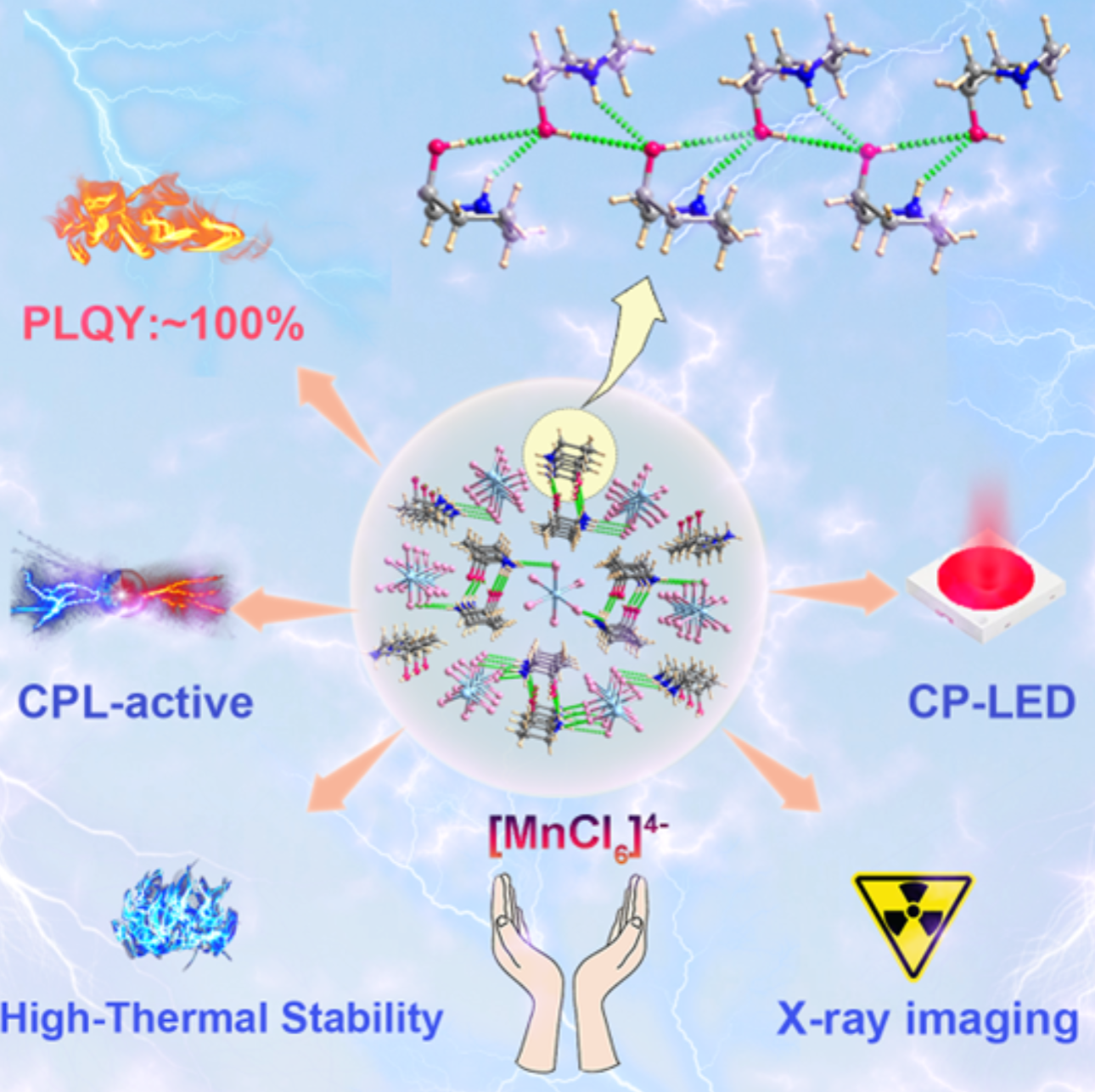Recently, the Photoelectric Functional Materials team at our university's School of Chemistry and Chemical Engineering achieved a significant breakthrough in the field of organic-inorganic hybrid manganese halide Circularly Polarized Luminescence (CPL). The research findings were published in Angewandte Chemie International Edition, a prestigious international journal in the chemistry field. The paper titled "Circularly Polarized Luminescence Induced by Hydrogen-Bonding Networks in a One-Dimensional Hybrid Manganese(II) Chloride" was authored by Li Jing, a doctoral candidate from the School of Chemistry and Chemical Engineering graduating in 2020. Professor Pang Qi from the same school served as the first corresponding author. Additionally, Guangxi University is acknowledged as the primary affiliation for this publication.

The current utilization of CPL materials is widespread across various optoelectronic domains, including 3D optical displays, photonics encryption transmission and information storage, X-ray imaging, and optical sensors. Organic-inorganic hybrid metal halides with exceptional luminescent properties and distinctive chiral structures hold promise as a novel category of CPL functional materials. Overcoming the challenges associated with achieving high photoluminescence quantum yield, thermal quenching resistance, and significant luminescent asymmetry factor in metal halide materials remains a focal point within this burgeoning research field.
In the face of this significant challenge, the team successfully designed and prepared hybrid manganese halide single crystals with exceptional circularly polarized luminescence (CPL) properties through chiral molecular induction facilitated by hydrogen bond networks. Furthermore, they elucidated the origin of chiral optical activity and provided insights into why the luminescence quantum yield approaches 100%. This groundbreaking work offers crucial guidance for structural design, crystal growth, and photoelectric applications of multifunctional chiral hybrid metal halide materials.

This paper was also supported by Professor Zhou Liya and Dr. Chen Peican from the School of Chemistry and Chemical Engineering of our University, Associate Professor Chen Yibo from the School of Chemistry and Chemical Engineering of Guangzhou University, and Professor Zhang Jinzhong from the University of California, Santa Cruz, USA.
The photoelectric functional Materials research group at our university's School of Chemistry and Chemical Engineering is dedicated to the design, synthesis, characterization, and application research of halide perovskite materials. Over the past few years, they have published more than 30 papers in internationally renowned journals such as Advanced Functional Materials, Chemical Engineering Journal, and Small.